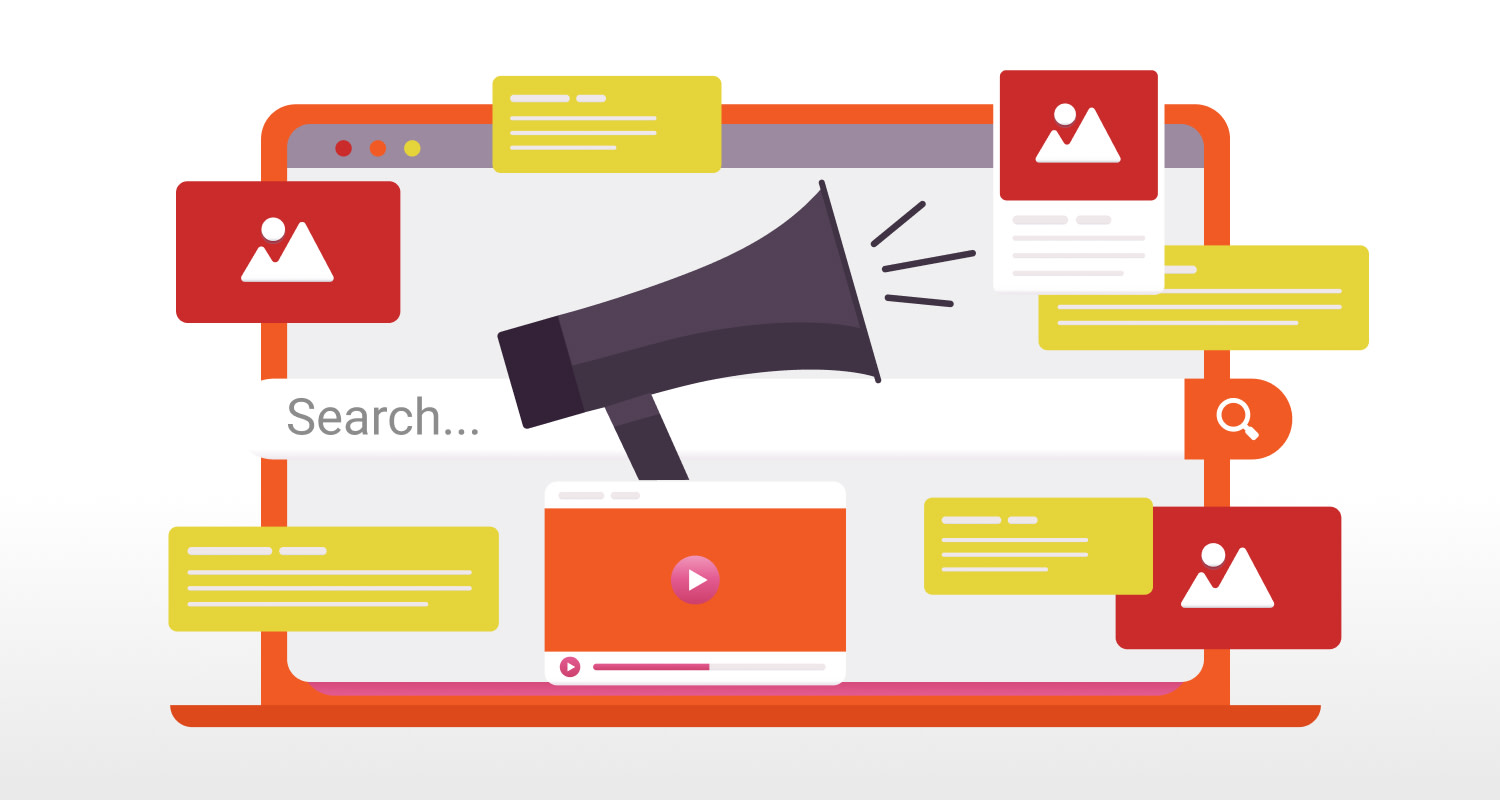//
Jan 16, 2023
6 Types of Digital Ads and When to Use Them
Digital advertising is a convenient, affordable way to reach customers.
These types of ads are designed to be relevant, targeted, and trackable, allowing you to see how effective your ad campaigns are at increasing conversions or driving brand awareness.
If you're interested in learning more about digital advertising and when you should use it, read on!
What is digital advertising?

Digital advertising is a form of marketing that uses the Internet to deliver promotional messages to consumers. There are four platforms on which digital ads are placed:
Banner ads:
Banner ads are typically placed on websites or within a mobile app’s interface.Email:
Email advertisements are sent directly to subscribers as newsletters or advertisements for another offer or product/service.Mobile:
Mobile ads can be placed in the user’s feed on their smartphones or tablets and can appear on home screens once you open an app (known as “interruptive ads”).Social media:
Platforms such as and Instagram also let marketers place digital advertisements in the feeds of users who see them when scrolling through their newsfeeds.
How do digital ads help your B2B inbound marketing strategy?
Digital advertising helps you reach your with a relevant message, so they're more likely to click and convert. You can use digital ads to drive more traffic to your website, which can lead to more conversions of the type you want—like leads or sales.
What are the 6 types of digital ads?
The type of digital ad you use depends on which platform (remember: banner ads, email, mobile, social media) you are using to reach your customers.
The six types of digital ads are:
- Display ads
- Native ads
- Social media ads
- Video ads
- Search engine marketing (SEM)
- Email ads
Read on to learn more about each type and when to use them in your strategy and campaigns.
Display Ads
Display advertising is the most basic form of digital ads and usually appears as banners, landing pages, popups, or flash ads on websites.
Display ads can be found on many websites, and because they are less targeted than other forms of advertising, more people will see them.
When to use display ads:
Display ads are a quick, cost-effective way to reach large audiences if you don’t have much money or time.
Because display ads do not appear on search engine results pages, these ads are typically cheaper and easier to create than other online advertisements.
Native Advertising
Native advertising is a form of paid media where the ad is placed in a natural environment on a platform that matches the content and format of the site where it is placed.
For example, if you were to create an article about travel destinations, you could have native ads promoting airlines or hotels at the bottom of your article.
Native ads are usually placed as sponsored posts, links, or videos on social platforms such as Facebook and Instagram.
Native ads can also be displayed within mobile apps and news feeds through instant articles or video recommendations (where they will look more like content recommendations).
When to use native advertising
Native advertising works especially well for subscription-based businesses or companies with online products.
When users click a native ad and learn about an offer for the first time, they aren’t ready to commit immediately. Therefore low commitment actions like signing up for free trials or taking quick quizzes are more likely to drive campaign clickers into your funnel than high-commitment ones like making purchases immediately.
But only by working closely with your sales team can this approach prove effective—once a lead comes in, a sales manager steps in to set up and carry out an email campaign that asks questions designed to convert the prospect into a customer.
Social Media
The appeal of social media makes it the perfect venue for digital advertising: audiences can be targeted very easily because there are so many users and they're all within one place.
Due to the nature of social media platforms, it is common to see a variety of different types of ads on them—from the display and native ads all the way through video ads.
However, if you don’t know how to create ads that are relevant to the audience you are targeting, you might end up doing more harm than good.
When creating social media ads, keep these tips in mind:
- Make sure your ad is relevant to the people who will see it on Facebook or Instagram. Don’t just throw up some random product that has nothing at all to do with what they like/use/do in their daily lives!
- Provide value by giving something away for free (e.g., an ebook). This builds trust with potential customers--and makes them more likely to buy from you in the future.
There are two types of social media ads: Paid and Organic

Paid social media ads are essentially native ads; they are meant to leverage promoted posts and reach specific people through the use of target audiences. They will be labeled “Sponsored” or “Advertisement” by the social media platform.
Organic social media ads:
Organic social media advertising is a form of word-of-mouth marketing and is usually not paid for (unless you are paying an influencer for affiliate marketing).
Your followers and social media influencers are the ones who will share about a product or service in their posts, videos, or stories. The people who are sharing your products and services, not the social platform, are the ones who signify it is an ad.
Organic social ads are great to build a loyal brand following and brands can easily receive feedback about their business.
When to use social media advertising
Instead of focusing on closing sales, most B2B companies use social media as a top-of-the-funnel marketing channel for content promotion and awareness.
READ MORE:
Video Ads
Video ads work well for B2B companies because they can show off products or services in action.
A common use case for video ads is product launches: People love watching videos that tell their stories – especially when these stories involve something tangible like a new product release!
Video ads aren’t just good at getting attention—they also tend to be better at converting viewers into customers than other types of digital advertising.
This makes sense when you think about who watches videos on websites: it’s not just random surfers looking for something interesting—people who have come specifically looking for information about your company or product!
When to use video ads
Product demo videos are most common among B2B companies selling high-end products.
It is important to define the goal of your product demo video when creating one. Conversions, education, or awareness can be three of many possible goals that businesses have for their videos.
Search Engine Marketing (SEM)

Search engine marketing (SEM) is a form of online marketing that uses paid ads to drive traffic to your website.
SEM can be a great way to build brand awareness. It’s also an effective way to generate leads, so long as you have some sort of conversion process set up on your website.
The benefit of SEM is it gives you direct access to customers who are interested in what you offer—they have actively searched for keywords related to what you sell or provide.
Email Marketing
Email marketing helps you build your brand because it allows you to create a personal relationship with your audience. When someone receives an email from you, it feels like they're communicating directly with a human being—not some automated bot programmed by a programmer who's trying desperately to figure out how the robot should sound (and probably failing).
As such, this type of communication builds trust; people know that if they have questions or concerns about something related to your company or product/service offering, they can contact you directly through email at any time.
It takes a considerable amount of time and effort to learn how to target B2B email marketing best, but that investment is worth it: according to .
When to use email marketing
Generating leads through email can seem intimidating in a B2B environment, but it offers great potential for establishing new business relationships.
Email marketing is a worthwhile endeavor, but it's best to start simple and build from there.
READ MORE:
When do you know it's time to hire a digital advertising agency to manage your digital ad campaigns?
If you’re ready to take advantage of digital advertising, but aren't sure where to start or you're struggling to see an ROI with your current ads, it may be time for you to hire a search engine marketing company.
Digital advertising agencies can help you develop a new strategy and take advantage of opportunities, freeing up your time to focus on other aspects of your business.
Now you know the six types of digital ads and when to use them.
We’re confident that with this information, you can boost your B2B marketing strategy with a well-coordinated campaign. If you need help with any of these steps, --we’d love to hear from you!
Ready to learn more about inbound marketing? Sign up for our course today.
Boost visibility, create engagement, increase leads and make more money with Inbound Marketing
Follow our free, easy-to-follow video series designed to show how to attract and convert more leads— and make more money with these tactics.







